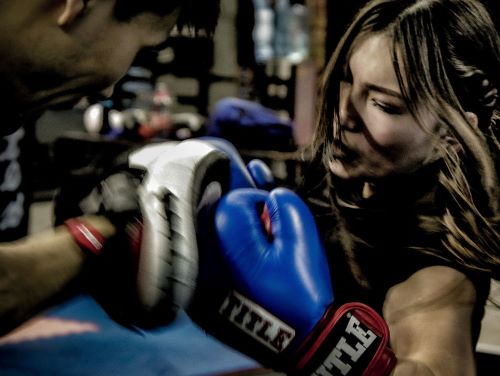Our hands and wrists contain lots of small bones and are adapted for flexibility and movement rather than hitting things. So in boxing we use protective equipment, including gloves and wraps, to reduce the risk of injury. But before considering equipment we need to look at 3 critical elements that you should always be aware of when doing any type of training involving impact:
- Technique – landing punches properly
- Conditioning – building up strength in your hands and wrists
- Body awareness – recognising the warning signs of potential injury
Technique
By curling our fingers into a fist and clenching the muscles of the hand and forearm we can make our hands a more effective striking weapon. You must learn how to form a fist and make contact with the first two knuckles, where your index and middle fingers join the flat of your hand.
The bones in your hand between the knuckles and wrist are called metacarpals. The metacarpals that join to your index and middle fingers are the largest and strongest, and the joints they make with the bones of your wrist (the carpals) have the least range of movement. Hitting with the first two knuckles means you are using the strongest and most stable part of your hand to withstand the impact.
Even if you have no plans to become a boxer, it’s worth getting some coaching on punching technique if you’re going to do contact training. You’ll learn about timing and how to judge distance, as well as how to align your hand and wrist. It doesn’t take long to learn the basics, but even professional boxers with years of experience spend time working on the fundamentals to eradicate any flaws.

Conditioning
When you start boxing, or you haven’t done any hitting for a while, you will need to build up the muscles in your hands and forearm. You can do this with hand-specific exercises and by hitting pads or a punchbag. Build up your conditioning gradually, and pay close attention to any aches and pains.
The biggest muscles involved in forming a clenched fist are located in your forearm. There are also smaller muscles in your hand that normally control fine movement in your thumb and fingers that play a part in stabilising the bones in your hand while punching. You can do hand grip exercises and weight training exercises like wrist curls and reverse wrist curls to build up these muscles. Start slowly with any exercise. Your hand has lots of small muscles that tire easily, and repetitive movements can lead to RSI.
The best way to condition your hands for punching is to practice hitting something; it could be pads with a partner, or a heavy bag. Once again it’s important to build up gradually. It’s also important to know what you’re doing, and if you’re hitting pads with a partner they need to know what they’re doing too, so get your technique right before working on conditioning.
Body awareness
Developing your technique and conditioning takes training and practice. And while you train you need to be aware of your body and watch out for signs of injury. It’s natural for your muscles to ache during and after exercise. But this should build up gradually and then subside afterwards. If you feel a sudden pain during exercise this is a warning to stop. And if you start getting persistent aches and pains it could be a sign that you’re over-doing it.
Be careful with your hands in particular. You should be able to move your hand and wrist freely without any tightness or pain. It really is worth taking your time to build up your conditioning gradually. Hand and wrist injuries can have a long recovery time and can result in weaknesses that lead to recurring issues.
